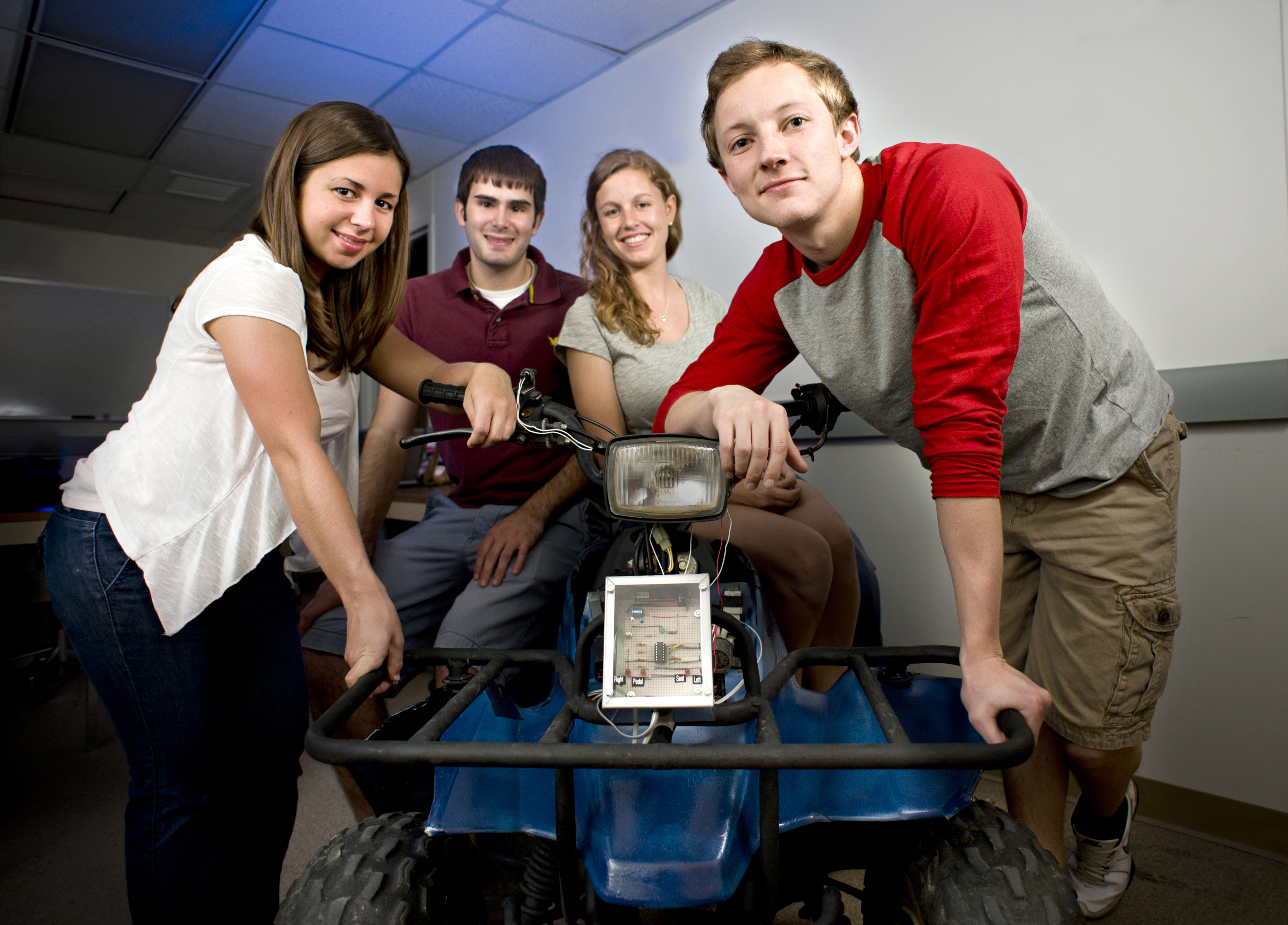Engineering students develop child-proof ignition safety lock for adult-sized ATVs

In 2009, an estimated 32,400 children under the age of 16 were treated at emergency rooms for injuries and 61 were killed in All-Terrain Vehicle accidents, according to statistics from the U.S. Consumer Product Safety Commission. Staffers at the federal agency see the ATV child-proof interlock system designed by four Virginia Tech College of Engineering students as one possible way to reduce those numbers.
The ignition safety lock system is multi-tiered – based on weight, cognitive ability and sitting position – making it virtually impossible for a child 10 years old or younger to start the vehicle by himself or herself. Commission staff came to Virginia Tech’s Grado Department of Industrial Systems and Engineering with a proposal for an ignition safety lock in September 2010, said Tonya-Smith Jackson, a professor within the department and the faculty adviser on the capstone senior design project.
“The students have designed a somatically redundant interlock ignition system for all-terrain vehicles to prevent children from starting ATVs that are made for adults,” said Smith-Jackson. “There are many child-deaths each year, and the [commission] has sponsored this team’s efforts to design an effective and reliable interlock. The students have come upon a feasible and effective design.”
The four students working on the project are Alexia Ioannou of Centreville, Va.; Jeff Howell of King George, Va.; and Kelly Miller and Clayton Harvey, both of Lynchburg, Va., all seniors in industrial systems and engineering. They designed several ignition locking systems from combination press/toggle switches on the throttle to a weighted spring on the back seat and a pedal switch. The students implemented the devices on a disused ATV donated by Miller’s father. “I was that 8-year-old kid who was riding on that ATV that shouldn’t have been,” Miller joked.
The gist: The three-step system requires a rider to be at least 90 pounds and sit far back on the seat, thus pushing the cushion down to activate a magnet switch. From there, the user must press down and pull a toggle switch, while also pressing a foot pedal. All three devices must be activated for the ignition to start, said Ioannou. The four students already have tested the ATV lock system on several local children under the age of 12, with no youngster able to defeat the system. “We hoped it would limit them and it has,” added Ioannou.
The project’s biggest challenge: Do it cheaply, for $500 or less, so that ATV manufacturers might voluntarily incorporate the safety system into future year models if the process can be shown as cost effective. No regulatory requirement is in place or planned for such a device on ATVs, but commission employees and ATV manufacturers regularly communicate on safety measures.
“We had been brainstorming for awhile, discussing why don’t we do something on ATVs, make them a bit more complicated to get them started, whether it be cognitively or physically, so a child could not operate it,” said Sarah Brown of the commission.
Brown is a two-time Virginia Tech alumna, earning bachelor’s and master’s degrees in industrial and systems and engineering in 2002 an 2005, respectively. Working with her at the commission is Hope Nesteruk, also a two-time Hokie, having earned a bachelor’s in math from the College of Science in 1996 and a master’s in industrial and systems engineering in 2001; both specialize in human factors engineering.
This is the second year the federal agency has worked with Virginia Tech students. For 20 years, it has collaborated with colleges across the nation to give seniors in varying majors the opportunity to apply their knowledge to real-world problems. Three years ago Smith-Jackson worked with the commission while on her sabbatical.
“We gave them a project that was very open ended, we didn’t give them a specific age, or any ideas on design, and that was because we wanted to see if they had something that we hadn’t thought of,” said Nesteruk. The students, she added, did their own research on injury and fatality statistics, and design work.
“They far exceeded our expectations,” Nesteruk said. “Go Hokies!”




